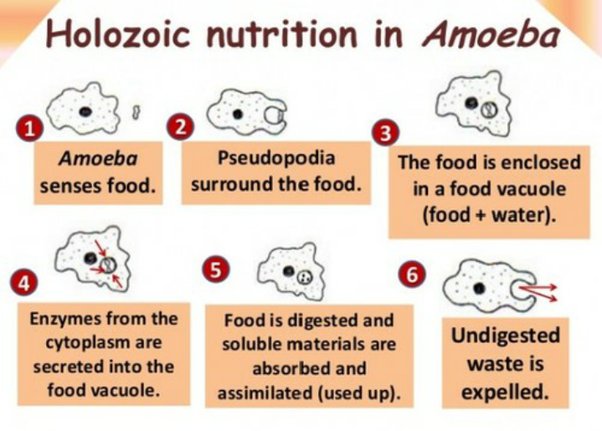Introduction
Holozoic nutrition is a fascinating dietary strategy employed by certain organisms, showcasing the versatility of nutritional acquisition in the living world. This comprehensive guide aims to unravel the intricacies of holozoic nutrition, providing a step-by-step exploration into its definition, organisms utilizing this mode of nutrition, the process involved, and the significance of holozoic nutrition in the broader context of ecological systems.
Step 1: Defining Holozoic Nutrition Embark on the journey by comprehending the essence of holozoic nutrition. This section outlines the fundamental definition, portraying holozoic nutrition as a type of heterotrophic nutrition where organisms ingest complex organic substances and subsequently break them down into simpler molecules for absorption and assimilation.
Step 2: Organisms Employing Holozoic Nutrition Explore the diverse array of organisms that embrace holozoic nutrition as their primary mode of feeding. This involves a detailed examination of holozoic nutrition in animals, ranging from microscopic protozoans to complex multicellular organisms, showcasing the evolutionary adaptability of this nutritional strategy.
Step 3: Process of Holozoic Nutrition Delve into the intricate process underlying holozoic nutrition. This section breaks down the stages involved, from capturing or ingesting food through various mechanisms, such as predation or filter-feeding, to the subsequent digestion, absorption, and utilization of nutrients within the organism’s body. Understanding these stages provides insights into the efficiency and adaptability of holozoic nutrition.
Step 4: Significance in Ecological Systems Uncover the ecological significance of holozoic nutrition within various ecosystems. This step explores how organisms utilizing holozoic nutrition contribute to the food web, exerting influences on population dynamics, energy flow, and nutrient cycling. Holozoic nutrition plays a crucial role in maintaining ecological balance and biodiversity.
Step 5: Examples of Holozoic Nutrition in Nature Illustrate examples of holozoic nutrition observed in nature. This section showcases specific organisms and their feeding strategies, from carnivores capturing prey to herbivores consuming plant matter. Real-life examples provide concrete illustrations of holozoic nutrition’s diversity and adaptability.
Additional Information
- Comparison with Other Nutritional Strategies: Highlight a comparative analysis between holozoic nutrition and other nutritional strategies, such as saprophytic and parasitic nutrition. Understanding these distinctions adds depth to the comprehension of nutritional diversity in living organisms.
- Evolutionary Perspectives on Holozoic Nutrition: Explore the evolutionary aspects of holozoic nutrition, discussing how this feeding strategy may have evolved over time in response to ecological challenges and opportunities. This adds a historical perspective to the adaptive nature of holozoic nutrition.
- Human Relevance and Holozoic Nutrition: Discuss the relevance of holozoic nutrition in the context of human dietary habits and the food chain. While humans are not holozoic organisms, understanding this nutritional strategy enhances awareness of broader ecological and nutritional concepts.
By navigating through these steps and additional information, individuals can gain a comprehensive understanding of holozoic nutrition. Whether delving into the intricacies of feeding mechanisms in nature or exploring the evolutionary and ecological aspects of nutrition, this guide serves as a valuable resource for those eager to grasp the multifaceted nature of holozoic nutrition in the living world.
Examples of Holozoic Nutrition
Examples of organisms having a holozoic mode of nutrition are Human Beings,Cat, lion, deer, crow, frog, fish, protozoa like Amoeba, paramecium, insectivorous plants etc.
The process of holozoic nutrition can be outlined in the following stages-
- Ingestion: the organism absorbs the food.
- Digestion: Digestive enzymes break down the food into smaller molecules.
- Absorption: The smaller molecules are absorbed into the bloodstream.
- Assimilation: The absorbed molecules are transported to cells throughout the body.
- Egestion: Undigested food is eliminated from the body.
Holozoic nutrition is a complex process involving multiple organs and enzymes. It plays a crucial role for animals as it enables them to absorb the nutrients necessary for their survival and well-being.
Example of Holozoic Nutrition – Amoeba

